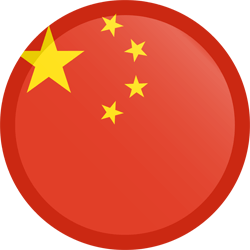“What happens in Mongolia is crucial to China’s settler-colonial project in the borderlands.”
Chinese authorities have launched a campaign to change the term that people use to refer to Mongolian culture and to the cultural and historical heritage of the Inner Mongolia Autonomous Region (IMAR) in a move aimed at eroding Mongolian identity and sense of homeland.
The Chinese Communist Party’s new official term, bei jiang wenhua, meaning ‘northern frontier culture’, eliminates reference to Mongolians, one of China’s 56 officially recognised ethnic groups. Since July 2023, Inner Mongolia state media articles, official websites, party statements, party-organised children’s activities, and official social media posts have widely promoted the phrase. The party’s regional propaganda office has also founded an academic journal dedicated to ‘northern frontier culture’, and Inner Mongolia’s premier state-run academic institute has opened a ‘northern frontier’ research centre.
The adoption of the term appears to be part of the CCP’s growing campaign to weaken Mongolian ethnic identity and instead push a Han-centric national identity through the elimination of Mongolian language education and other measures.
Under Chinese leader Xi Jinping, the party has increasingly equated the culture and language of the dominant Han ethnic group, which comprises more than 90 percent of the country’s population, with being a loyal member of the ‘Chinese nation’ (Zhonghua minzu). It has aggressively pursued assimilationist policies throughout the country, especially in nominally autonomous regions including Xinjiang and Tibet, where the party views strong ethnic identity as a threat to its rule.
[…]
The CCP Inner Mongolia Autonomous Region Committee, the region’s top political body, launched the ‘northern frontier culture’ campaign in July 2023. The party committee called for ‘forging a strong sense of community for the Chinese nation’ by ‘establishing the “northern frontier culture” brand, according to a meeting communique released on July 6.
[…]
The campaign has swept through the region’s museums, universities, institutes, schools, and even art shops.
[…]
Shops selling traditional Mongolian art and handicrafts seem to be a target for the campaign as well. In July 2024, the owner of a shop in Baotou selling Mongolian silver jewelry told the People’s Daily: ‘I want to do the utmost to showcase these exquisite works to more people, allowing them to appreciate the allure of northern frontier culture.’
The Chinese government has recently adopted similar terminology shifts in Xinjiang and Tibet.
[…]
Ethnic Mongolians comprise about 18 percent of Inner Mongolia’s population, with Han Chinese making up about 79 percent. While 18 percent might seem comparatively small, it amounts to more than 4 million people.
[…]
Language is a core part of the campaign—and not just when it comes to terminology. The CCP began rolling back minority language education in Xinjiang and Tibet in the 2010s. Inner Mongolia did not change its education policies during that decade, and Mongolian remained the primary language of education in many schools for Mongolian students in the region. But in 2020, the CCP expanded the plan for ‘national unified Chinese textbooks’—meaning the mandatory adoption of Chinese-language textbooks—to all regions with large minority groups, including Inner Mongolia. The change was met with the largest protests Inner Mongolia had seen in decades, which the government swiftly subdued.
‘At the start, they [the government] said they would be switching from Mongolian to Chinese for only a few select subjects, but that turned out not to be true,’ says Togochog. ‘Mongolian language is now taught as a foreign language once a week, Mongolian students and children are barred from learning any subject in Mongolian anymore.’
The plan’s roll-out was completed in October 2023, just a few months after the launch of the ‘northern frontier culture’ campaign.
‘What’s happening in Inner Mongolia,’ James Leibold said, ‘is crucial to understanding the intention of the party in continuing to carry out its settler-colonial project in the borderlands.’


